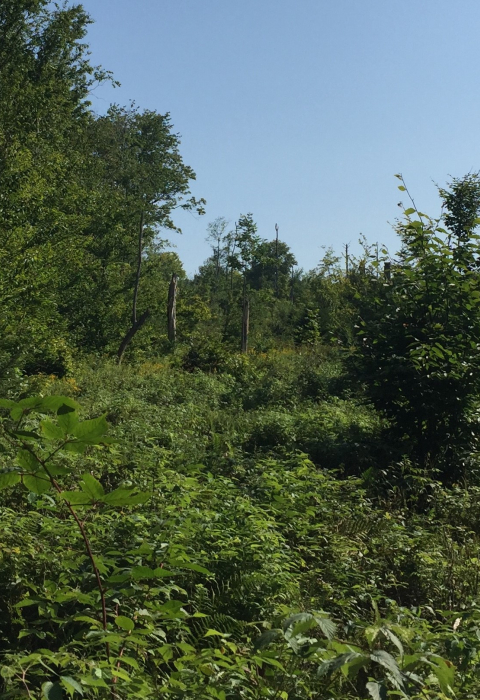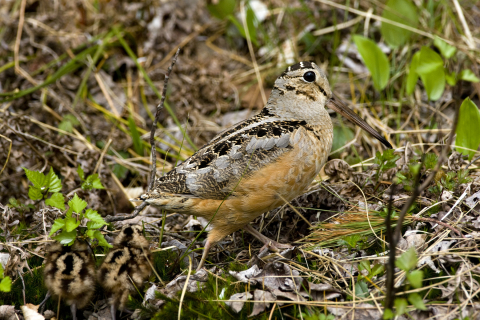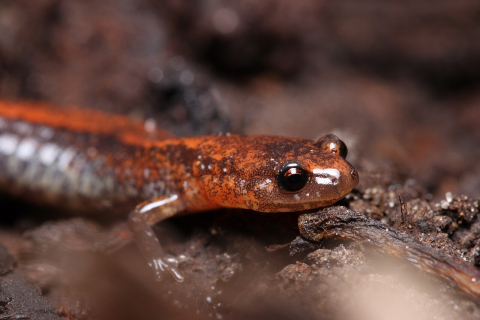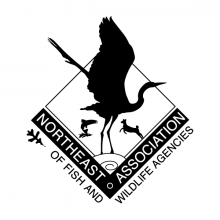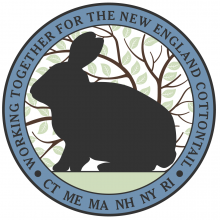State Wildlife Management Area Project
Farmington River Wildlife Management Area’s 1,849 acres include a great sweep of upland hardwood forest – trees that today are mainly middle-aged. To add some younger habitat, biologists worked outward from a core patch of relatively young trees that had grown back following an earlier shelterwood timber harvest.
Between 2014 and 2016, commercial timber cutting yielded valuable saw logs, pulp wood, and firewood. The result was 55 acres of new, thick, food-rich, regrowing young forest habitat created to attract and help New England cottontail, snowshoe hare, white-tailed deer, black bear, ruffed grouse, and wild turkey.
Songbirds use the dense growth for nesting and for feeding on insects and fruits produced by blackberry, raspberry, and huckleberry shrubs. Canada warblers, wood and hermit thrushes, veeries, indigo buntings, and rose-breasted grosbeaks are a few of the many birds found on the WMA.
Woodcock Feed Here
Damp-soil zones offer good feeding areas for American woodcock, which probe with their bills into the soft soil to find worms, their main food. The WMA includes a forested wetland, a type of cover that “offers good potential habitat for New England cottontails,” says biologist Dave Scarpitti. “Since this area was once farmed, there are stone walls snaking through the woods, with plenty of crevices and cracks that cottontails can duck into to escape predators.”
Slash on the Ground Makes a Unique Habitat
The timber harvest left plenty of coarse woody debris on the ground, “slash” that, as it slowly decomposes, yields habitat for pollinators, reptiles and amphibians, and small mammals. Piles of slash made it harder for deer to browse back sprouts and shoots of young trees, giving the new young forest a good start. Scattered logs left on the ground became drumming logs for grouse: During the spring breeding season, males perch on the logs and beat their wings loudly to attract females.
“This project was designed to attract and benefit New England cottontails,” says Scarpitti, “but the habitat is also good for so many other animals. The folks who use the WMA for recreation enjoy better opportunities for hunting and for viewing more – and more diverse – wildlife.”
In 2024, habitat biologists oversaw another timber harvest on 108 acres to the west of the earlier cut, assuring local wildlife an ample supply of young, regrowing forest for years to come.
How to Visit
The young forest habitat lies west of the intersection of Becket and Lee-Westfield roads. Parking is available on a log landing on the west side of Becket Road, just south of the intersection. These dirt roads are not always plowed in winter and may be difficult to negotiate in spring or after heavy rainfall.
Learn more about Farmington River WMA.

